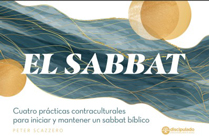Our Greatest Longing and "Goal"
Most Christians are more focused on the here-and-now than on the then-and there, i.e., our future life that is anchored in heaven (Heb.6:19). Giovanni Lorenzo Bernini (1647-1652) and his sculpture of Teresa of Avila. and the angel with the spear, portrays the following episode from her autobiography where she describes her encounter with God. We see in her a picture of our greatest longing: I saw in his hand a long spear of gold, and at the iron’s point there seemed to be a little fire. He appeared to me to be thrusting it at times into my heart, and to pierce my very entrails; when he drew it out, he seemed to draw them out also, and to leave me all on fire with a great love of God. The pain was so great, that it made me moan; and yet so surpassing was the sweetness of this excessive pain, that I could. Read more.






